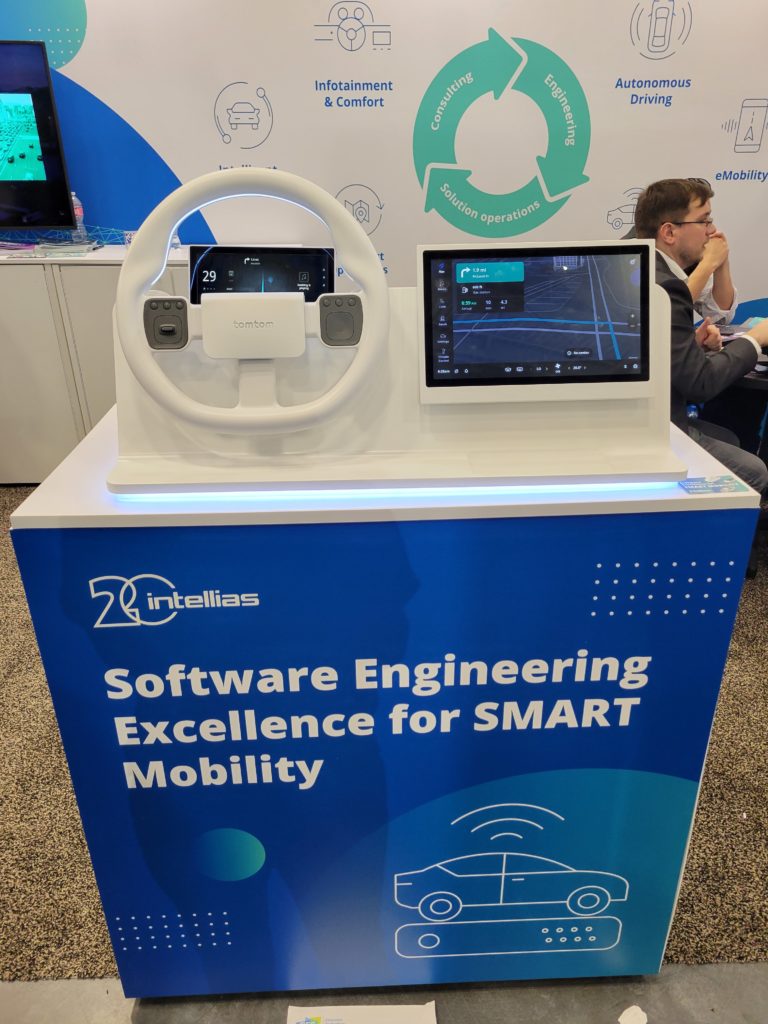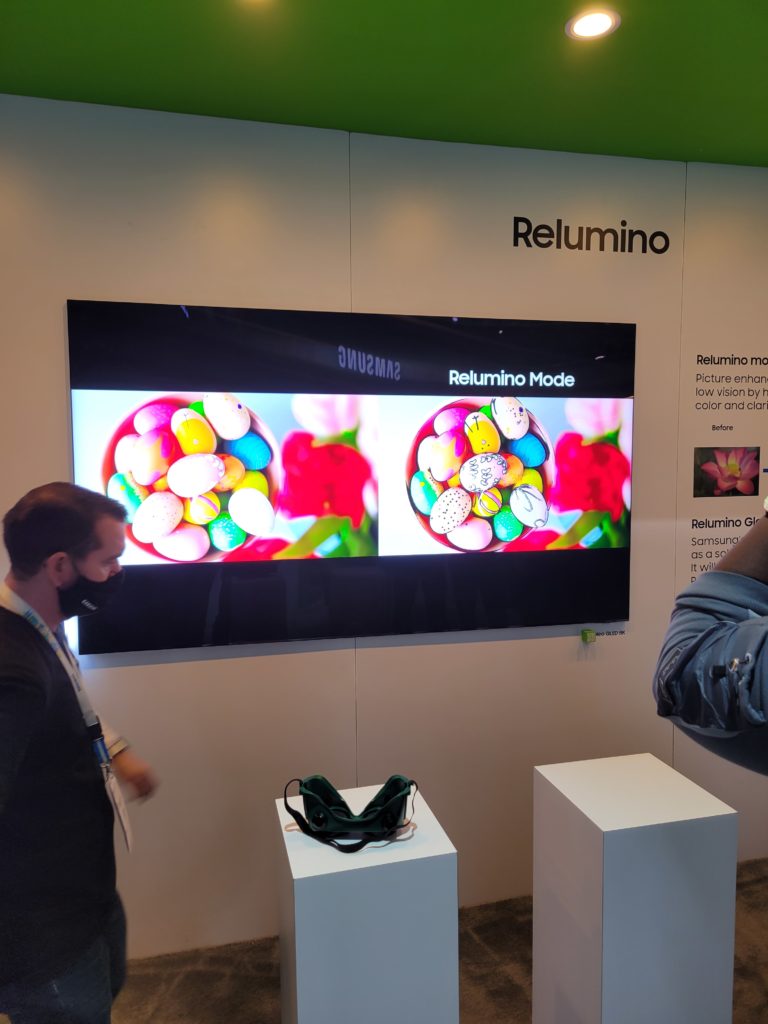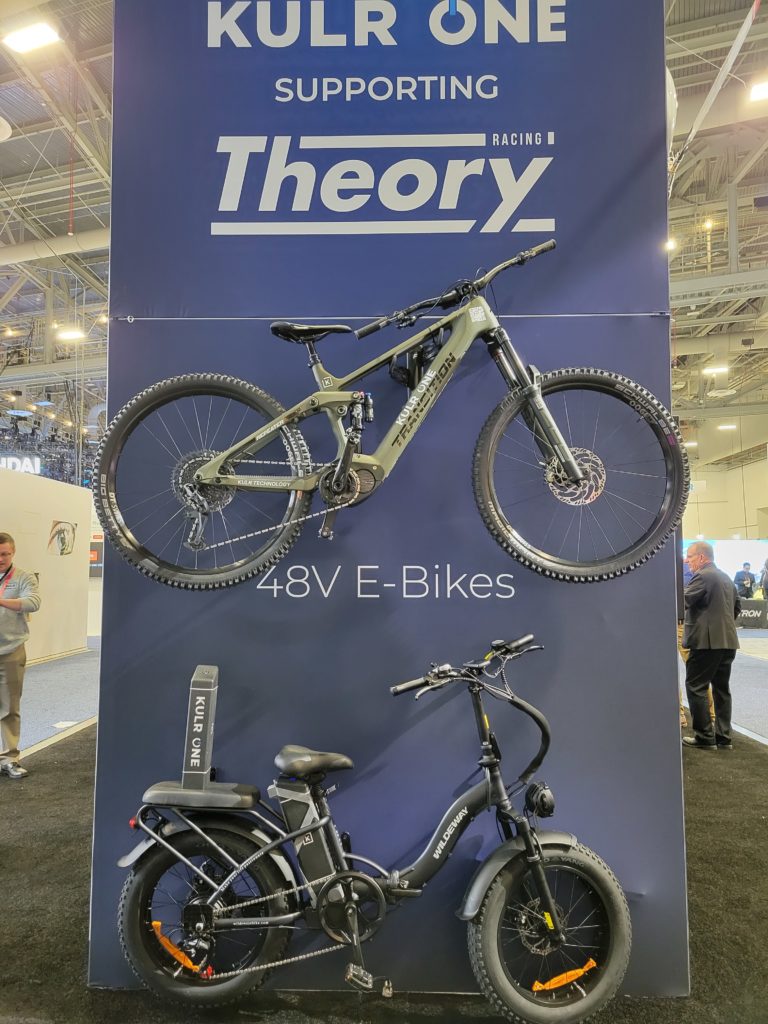Last week I went to CES, the annual Consumer Electronics Show that showcases the latest in technology, to talk to entrepreneurs and innovators, try some new products, and think about what’s next in tech. I also presented on a panel about the public policy we need to promote innovation and consumer protection, such as new antitrust and privacy laws to rein in the power of Big Tech and give small and midsize businesses like the ones we see at CES a fair shot to offer consumers an alternative. Here are a few quick notes on what I learned:
It was exciting to see the multiple practical applications of augmented reality and virtual reality, specifically training and teaching skills. I practiced painting a wooden post using a VR controller with a special attachment to simulate the particular spray bottle the paint would come in. The VR program also teaches welding and even offers programs on soft skills like customer service. I also saw a neat AR product for fighter jet training, but since it’s actually for use in the air, I didn’t get to try it out!
The coolest AR product that I did get to try was from the company Magic Leap. Having the clear visor display for its AR product was really useful for conversing with a person in the real world (to receive instructions and ask questions) while completing the AR task. Plus, I tried out a training module from Magic Leap for inspecting an airplane part. The AR guides you through the inspection, indicating what to look at and what you’re looking for, such as putting a circle around the area that needs to be checked for cracks or fissures. The fact that it’s AR and not VR is important: You need to see the real airplane part in real life to do the inspection, but you’re aided by the program.
One of the coolest things I saw on the show floor was a pair of real time translation headphones.They look just like regular earbuds, but appearances can be deceiving. My first thought was that this is a great product from sci-fi that I’d love to see in real life, like the Babel fish from “Hitchhiker’s Guide to the Galaxy,” or the universal translator from “Star Trek.” My second thought was how this product might survive in our current consolidated landscape, which often prevents innovative products like these headphones from getting off the ground. I wonder how many innovations we see at CES actually succeed in the market, and if they don’t, why not – and how much does a consolidated market play a hand in this?

This is a device from TomTom that turns an old car into a smart one. It provides the type of data analytics and driver info (and navigation, of course) that new cars have, without having to buy a new car. The modularity of this actually seems to me way preferable to the model we have today where you buy your car with a computer in it and can’t easily repair or replace it. It would definitely be easier if this was just an app on your phone, but the experts at the booth explained that for some of the key tools to work, you really need to plug the device into the car’s hardware. (It has to be installed by a dealer.) I’m sure that escaping the app store monopolies is just an added benefit and not the primary reason, right?

I saw a lot of neat stuff in the Samsung room. I especially appreciated that Samsung is highlighting all the different companies that have Internet of Things (IoT) products in Samsung’s SmartThings ecosystem. I always worry that an IoT platform will follow the same “open, dominate, close” playbook that we see in some other platforms, short circuiting competition. But, so far, it looks like the company is recognizing the importance of openness! I tried out Samsung’s Relumino image enhancement product to help people with low vision see and process what’s on the screen. And I learned about a bunch of nifty, little sustainability things like upcycling your old phone for use with SmartThings products.
E-bikes!! I love my e-bike. It’s not a market I study, but from a consumer perspective, there are a ton of different options. Modularity and interoperability of key components seems to have simplified entry by a lot of different brands. Repairability is also high; there are certified retailers and repair technicians, but my e-bike repair specialist works out of his house and can work on a variety of brands.

Concerns about low-quality batteries combusting remain a key barrier to innovation and expansion of the e-bike market, as experts confirmed for me at CES. The New York City Housing Authority (NYCHA) even made a rule that public housing residents couldn’t bring their e-bikes into NYCHA buildings because of these risks! The Consumer Product Safety Commission recently published a letter about the issue. Good actors in the e-bike industry may support regulation to help improve safety and, thus, expand the industry. Innovators are already working on safer e-bike batteries. On the show floor, I saw a new, safer e-bike battery with special protections to prevent combustion and fires. They’ve got a heat propagation prevention layer between the cells so if one cell gets hot, instead of that heat spreading throughout the battery, it shuts down. This can help expand e-bike adoption and cut down on car usage!
Innovation policy can be complex. But it is never as simple as telling the government to take a hands-off approach. Whether it’s stronger competition policy to open up markets so ideas can disrupt the status quo, or consumer protections to increase consumer confidence in a new product or service, we often need government action to support innovation.